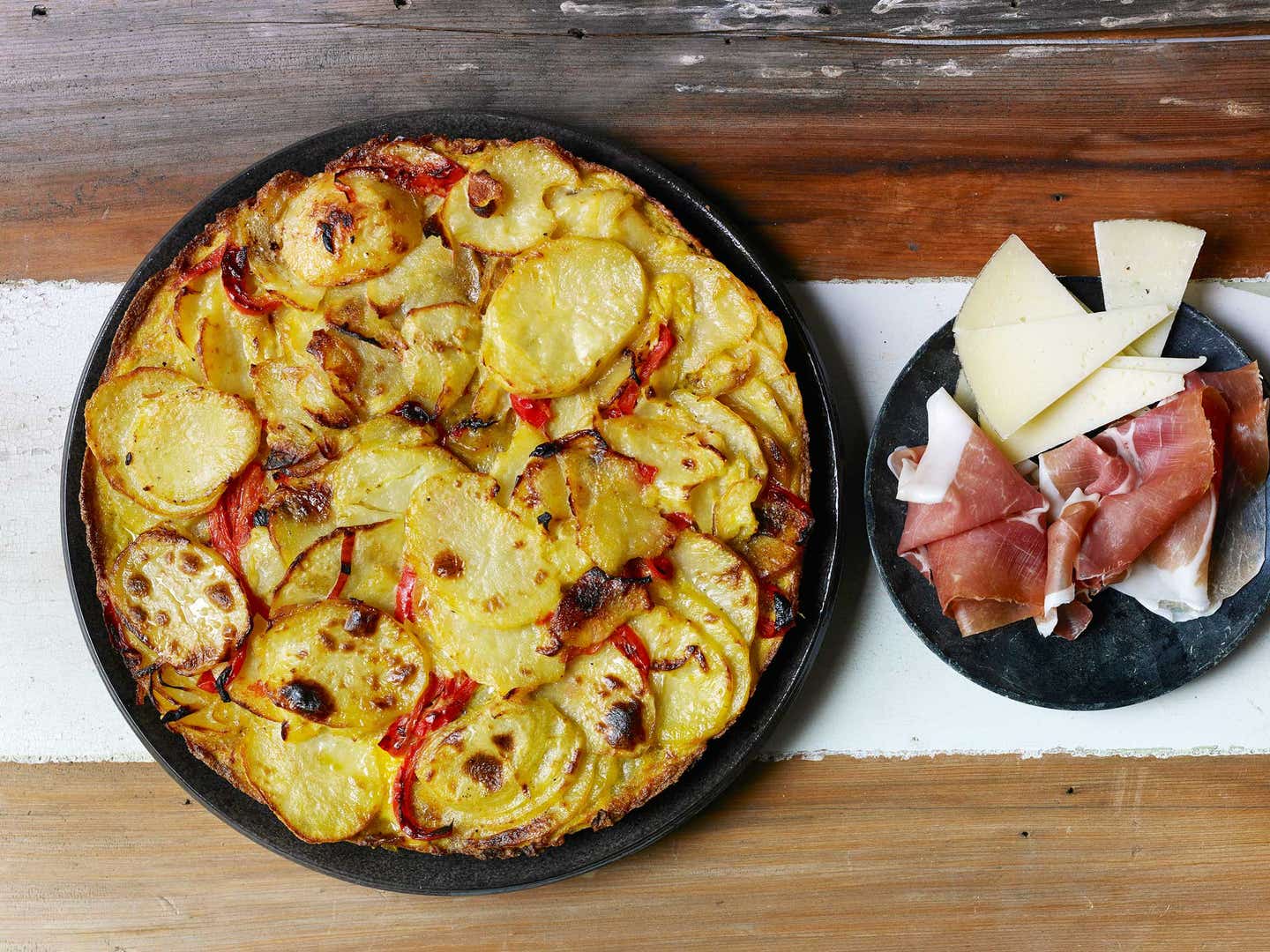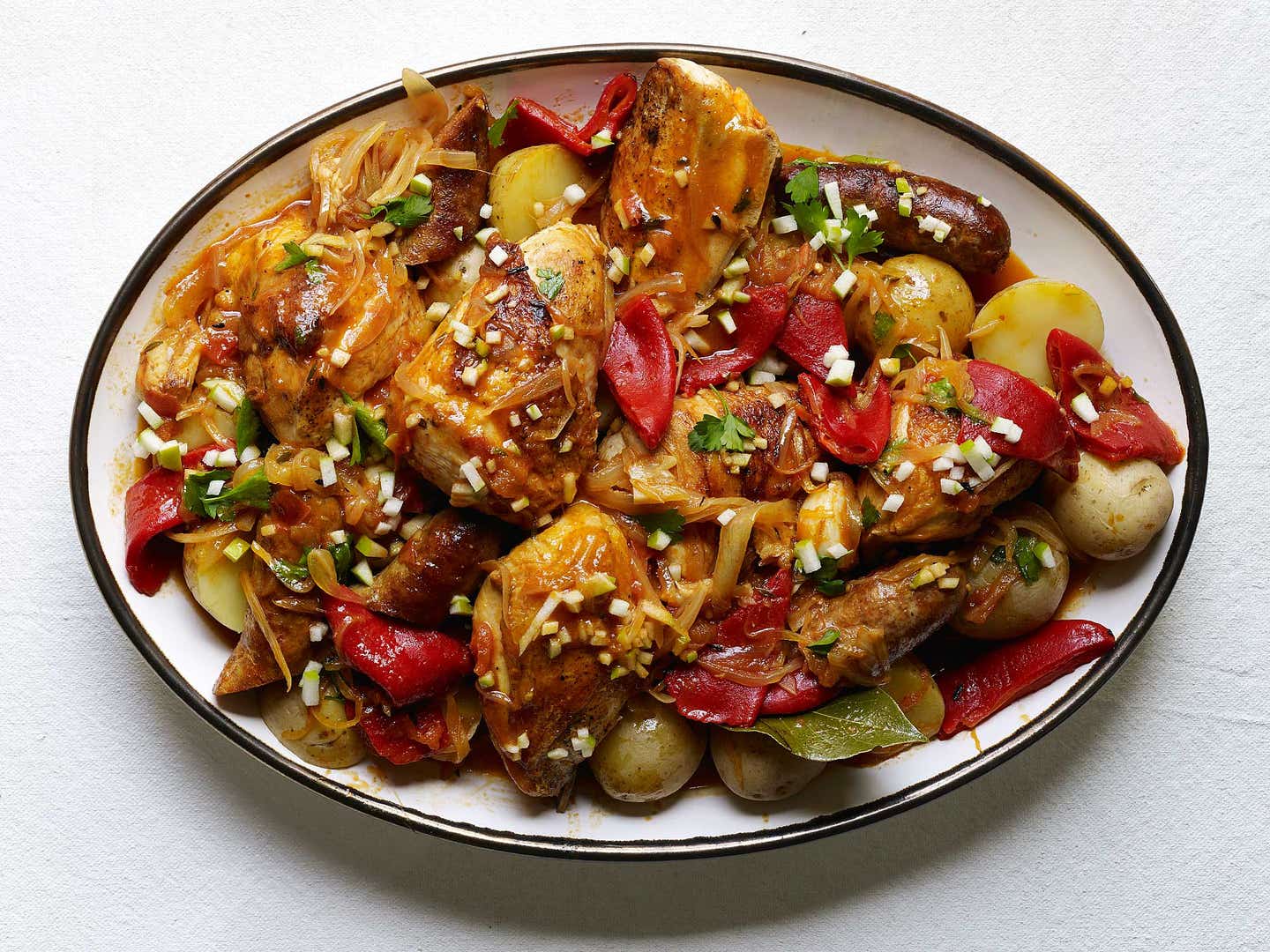
Meet the Bakers, Cheesemakers, and Pepper Farmers of Basque Country
Jane Sigal follows the makers preserving the native tastes and character of this distinctive corner of southwestern France
My friend Olivia's mother and aunt are preparing quintessential Basque dishes for dinner. There will be blistered padrón peppers, along with baked goods. For the moment, it's a squid cook-off, and the sisters eye each other's mise-en-place in the aunt's apartment kitchen in Biarritz, an elegant beach town wedged between the Pyrenees and the Atlantic Ocean. When most people think of Basque country, they think of Spain, but the region is made up of seven provinces, three of which are in France.
The French portion, called Iparralde in the Basque language, has its own way of doing things. Dinner's at eight, not 10, and it's a full meal. While Olivia's mother and aunt squabble over just how much garlic is too much for their dishes—both end up lovely, though I prefer her aunt's intensely garlicky version—there's no debate on the subject of how to properly approach the ubiquitous gâteau basque that follows for dessert: no fork necessary. Eating the uniquely French Basque pastry, buttery and filled with dark cherry preserves, with your hands is part of the pleasure.
On an early spring tour of the Pays Basque, when the Atlantic is cold but surfers are out, suited up in neoprene, Olivia introduced me to some local characters who are keeping the region's wholly unique traditions alive while adding their own interpretations. Together, they compose a gastronomic cross-section of a region that maps and locals sometimes disagree on. "This is Basque country," as Olivia's cousin told me one night at the dinner table. "Not France."
The Charcutier
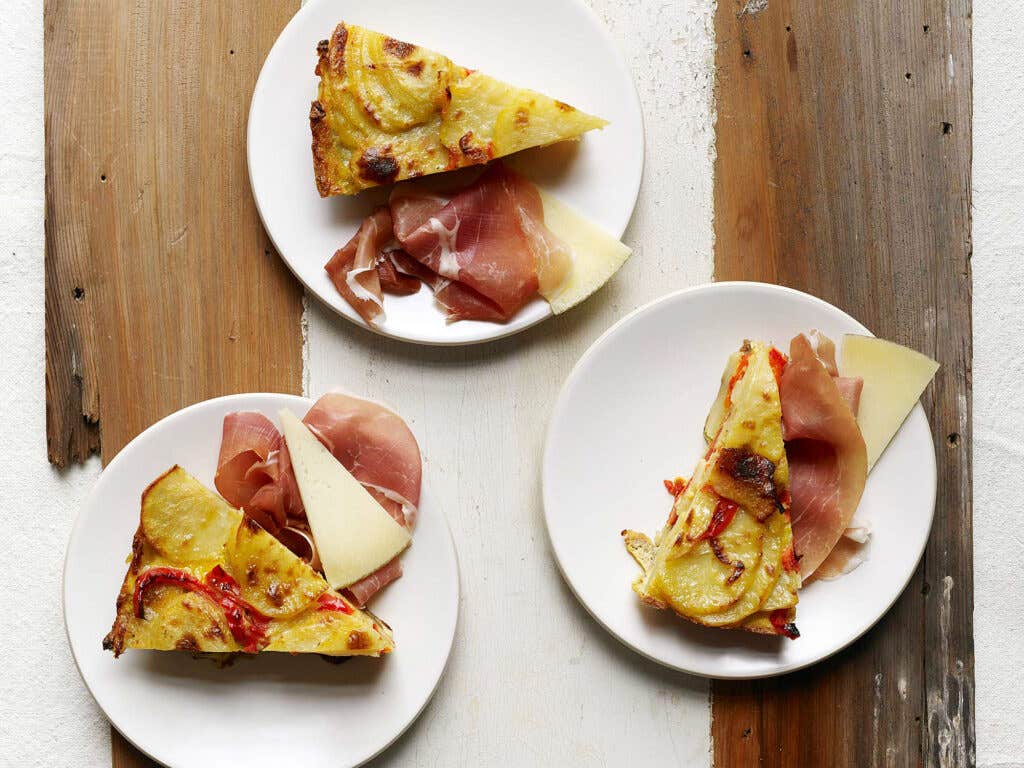
With his right hand, Eric Ospital slides a probe into the thickest part of the jambon de Bayonne (Basque ham), then presses it to his nostrils and inhales deeply. The probe, called a sonde, is shaped like a digital thermometer but more elegant and much lower tech, carved as it is from horse bone.
Ospital is a judge at the annual Foire au Jambon, a ham fair held each spring in Bayonne since 1462. In tented stands along the Nive River, fairgoers noisily dig into ancient shepherd's snacks of griddled cornmeal flatbreads stuffed with bacon or sausage and dripping with cheese. But here in the ham competition, it's nearly silent, the mood serious. Ospital and his fellow judges, charcutiers dressed in matching neckerchiefs and black lab coats, make their way around tables of enormous haunches. Among them are red-robed, note-taking members of the Bayonne ham brotherhood, photographers, and a crowd of tense farmers. These farmstead hams are rubbed with red piment d'Espelette for color and arranged in folkloric displays. One re-creates an autumnal scene with moss, chestnuts in their spiky shells, and cèpe mushrooms. Another ham is accompanied by a cutout of the Bayonne skyline—all cathedral spires and arcaded houses—and other regional signifiers, like the handmade woven basket and leather ball of pelote, a popular jai alai-like game, and cocoa beans, a nod to the region's delicious chocolate.
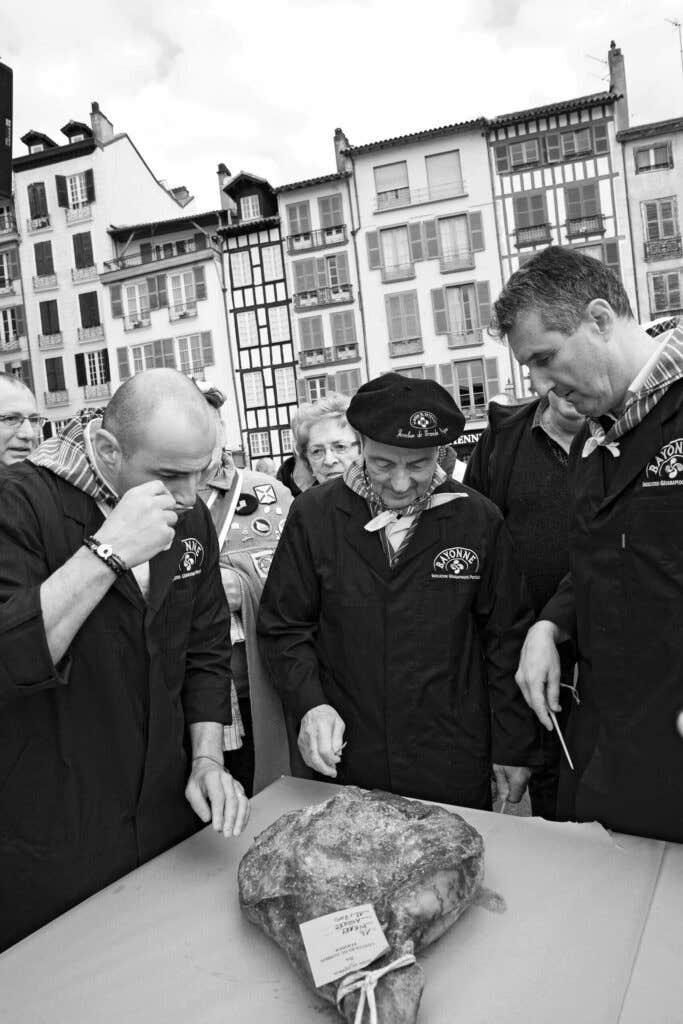
By holding the sonde to his nostrils, Ospital can tell if the meat is pleasantly savory—or musty. "We work with the nose," he says, at the same time prodding the ham leg with his left hand to feel if it is too hard (dried out), too soft (not aged long enough), or properly firm.
France recognizes jambon de Bayonne—raw, unsmoked, simply cured with salt and air-dried—as worthy of its own indication géographique protégée (IGP) label. Translation: Here is a ham so inherently special and inimitable that any attempts to duplicate it elsewhere or tweak its production should be prevented by law. Yet Ospital's father, Louis, felt, like judges from older generations, that the designation didn't go far enough to protect the quality and traditions of their hams. In the 1980s, they created their Ibaïama label, which uses only a specialized breed of pigs and a 20-month-average aging time. Even the source of the salt is indicated: Salies-de-Béarn, where a saltwater spring produces white pyramidal crystals that taste of violets.
Today, Eric Ospital is a recognized master of the ham-making arts. Thomas Keller and Daniel Boulud fly trainees to southwest France to study with him. In his late teens, Ospital apprenticed with charcutiers in Bayonne and did his military service in Berlin around the time the wall came down. After, Ospital worked at Paris's legendary food emporium Fauchon during the tenure of pastry visionary Pierre Hermé. He learned discipline and precision while preparing oeufs en gelée and foie gras terrines. It was around that time, in the 1990s, that food artisans began to appear on the menus of Paris's best restaurants.
Ospital had found his mission: to rehabilitate the profession of charcutier. In the 1980s, as the French began to eat out more, charcuteries started focusing less on cured meat and more on takeaway meals, too often bought from industrial wholesalers. Ospital traveled to Italy to see how the finest hams were made. He modernized his father's recipe by using less salt and then took the nutty, sweet ham to Paris. Modern bistro pioneer Yves Camdeborde preferred the texture of Ospital's product to the fabled acorn-fed hams of Spain and introduced it to his clients. Eventually, Joël Robuchon and Thierry Marx came calling—though they served the ham in dainty slices, unlike in Basque country, where it's often cut into thick steaks, griddled, and served with eggs.
Ospital's hams are aged in an airy drying room next to the Ospital family charcuterie in Hasparren, 22 miles southeast of Biarritz. The space looks like the spotless attic of a particularly industrious Basque grandmother: Strings of Espelette peppers dry under the steeply pitched roof, and hunks of ham dangle from heavy wood beams. Each is swaddled in muslin and wears a small blackboard with the name of a restaurant to which it's been promised; each is aged differently, according to the individual taste of its patron. Every year, Ospital produces only 1,000 hams. Some are destined for Paris, others for Japan and New York. The ham maker is pleased with his progress, though he notes, "If you have to have a Maserati, this is not the job for you."
The Pepper Grower
The one homegrown chile of France is, like many things French, subtly complex. Piment d'Espelette has flavors of tomato and hay and a buzz that's gentle rather than incendiary.
"We never use black pepper at home," says Rodolphe Bidart, who grows the pepper on his farm near the spa town of Cambo-les-Bains. The mellow heat and warm familiarity of the peppers are enough for him.
Bidart used to lay tiles to make ends meet before he transitioned to farming full-time, a shift that's telling of piment d'Espelette's evolution: Once barely known beyond the Pyrenees, the vibrant dust of this brick red pepper has now spread as far and wide as San Francisco and Bangkok, where chefs sprinkle it on plates for added color.
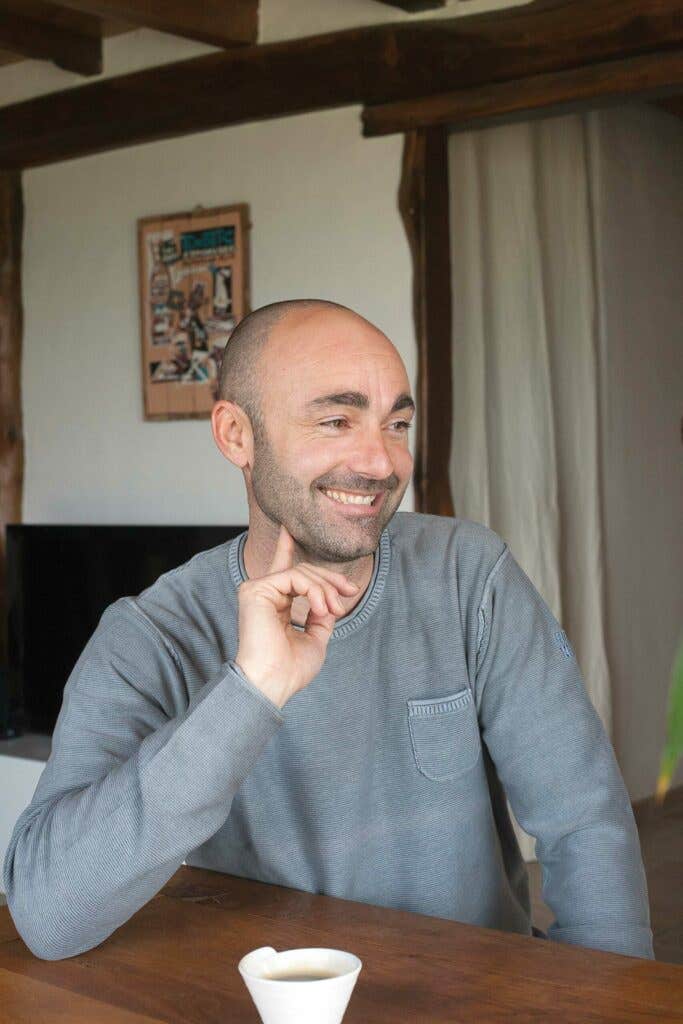
Bidart's house, a converted barn with coppery stone walls and green shutters that's belonged to his family for four generations, is the perfect spot for storing hay. It's dry and sunny here, but a few miles west, outside Cambo-les-Bains, the climate is completely different and better suited to growing the slender 3- to 4-inch peppers. Warm moist air from the Bay of Biscay rises over the slopes, and it rains, often.
At his greenhouse near Cambo, Bidart shows off the 6-week-old shoots he's started from seeds saved from last year's harvest. In April, he plants the seedlings outside. In August, as the peppers ripen, everybody—wife, father, brother, brother-in-law—is pressed into harvesting duty. It's done by hand, an AOP regulation. The chiles are air-dried (but not smoked like pimentón in Spain) on racks, first in the greenhouse for two weeks, then for two days in a dehydrator. When all the moisture is coaxed out, the peppers are ground. Dried, they're the same oxblood color as the exposed timbers in the storybook farmhouses of the region.
Before they had dehydrators, farmers strung up the peppers on south-facing façades, and you still see them, red braids on whitewashed walls, in the pepper's namesake capital of Espelette, near the Spanish border. Harking back to this custom, pepper growers save the prettiest chiles to sew into garlands, and locals dry them at home or buy them dried, then crush or chop them as needed.
While Bidart can rattle off that it takes 7-plus kilograms of fresh peppers to make 1 kilogram of the spice, he can't tell me much about what to do with it in the kitchen. Instead, he drives me northwest along the scenic, winding Route Impériale des Cimes to Bayonne, where his school friend Sébastien Gravé operates La Table de Pottoka, named after a native pony believed to have Paleolithic origins.
Gravé trained with the celebrated chefs Joël Robuchon and Christian Constant. He works with the freshest ingredients and a broad Basque humor. Bidart and Gravé chat in fits of laughter, while the chef prepares his take on chicken basquaise, breasts sautéed until golden brown, then quickly braised in white wine and stock. With piquillos replacing bell peppers, spicy sausages instead of ham and a hit of diced green apple, this iteration provides a new conception of the Basque standard and a pointer on piment d'Espelette: You don't cook it. Sprinkle it on just before serving, Gravé says. Unlike its Spanish relative pimentón, whose smokiness practically blooms in the pot, the French chile's delicate flavor can't take the heat.
The Baker
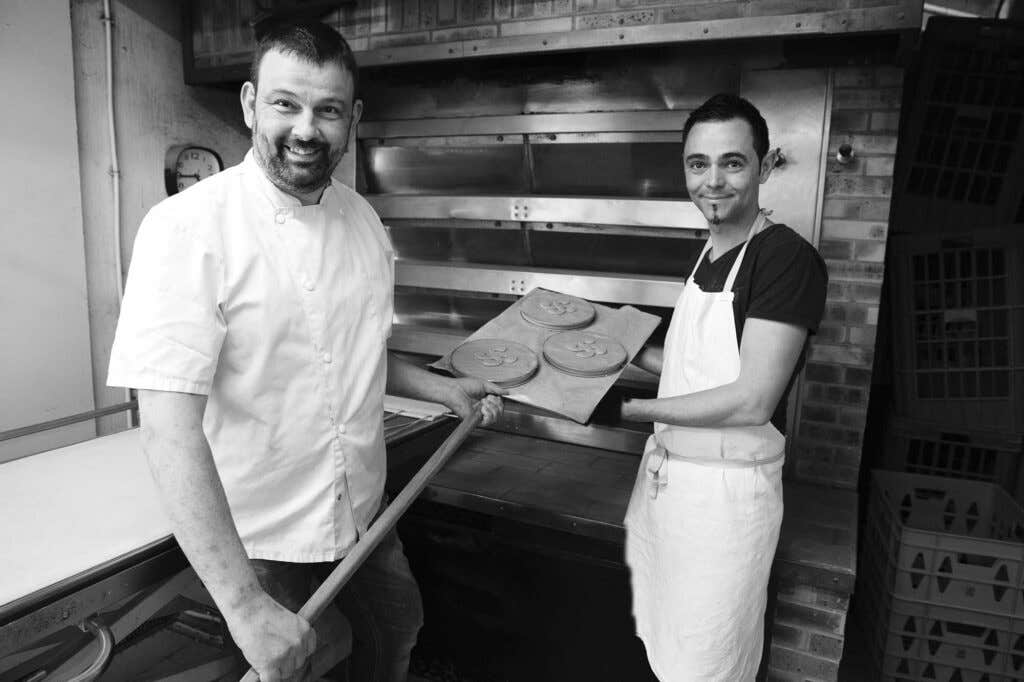
Mickaël Sansoucy tosses boulangerie-size heaps of sugar, butter, eggs, and flour into a mixer for the pâte sablée in his gâteau basque. Asked if the dough might be too tough, he looks amused. "You don't have to worry," the baker says with a massively dimpled smile. "There is so much butter in this pastry."
A six-minute ride from Cambo-les-Bains, the town where the emblematic Basque dessert was invented, the baker from Brittany makes a prizewinning version of the cookielike double-crusted tart with a filling of either vanilla pastry cream or dark cherry preserves. Since Sansoucy arrived in Larressore in 2010, the community has embraced him with a big warm hug. His customers even nominated his bakery, Axola Gabe—a Basque translation of his family name that means "carefree"—as a contender for the Top Chef-like reality cooking show La Meilleure Boulangerie de France.
Mickaël and his brother, Sylvain, who takes care of sales and promotion, left their home of coastal Brittany in search of an environment that would welcome their unusual ideas, like gluten-free baking. "Being Breton, I absolutely wanted sea and mountains," Mickaël says. "And Basques and Bretons have their own languages and many of the same cultural codes. Basques are more accepting of newcomers and innovation though."
In some ways, the Sansoucy brothers have taken a step back in time. In their small artisanal shop, they bake baguettes and country loaves, plus rustic croissants, cakes, and pastries. They sell at roving markets and make individual deliveries to people who can't get out. But their delivery trucks are 100 percent electric powered. And riding the trend of resurrected ancient grains, Mickaël uses stoneground wheat and flours made from einkorn, buckwheat, rye, and kamut. The brothers can't keep up with dem-and; they're building a new bakery.
You could say Mickaël has become more Basque than the Basques themselves. He studies Euskara, their ancient language, and is a member of Eguzkia, the gâteau basque's defending authority. In fact, his by-the-book version of the pastry has placed three times in Cambo-les-Bains's annual gâteau basque contest. He's also introduced a version of Brittany's buttery kouign amann pastry with a very Basque touch: It's layered with a bite of piment d'Espelette-spiked chocolate.
The Cheesemaker
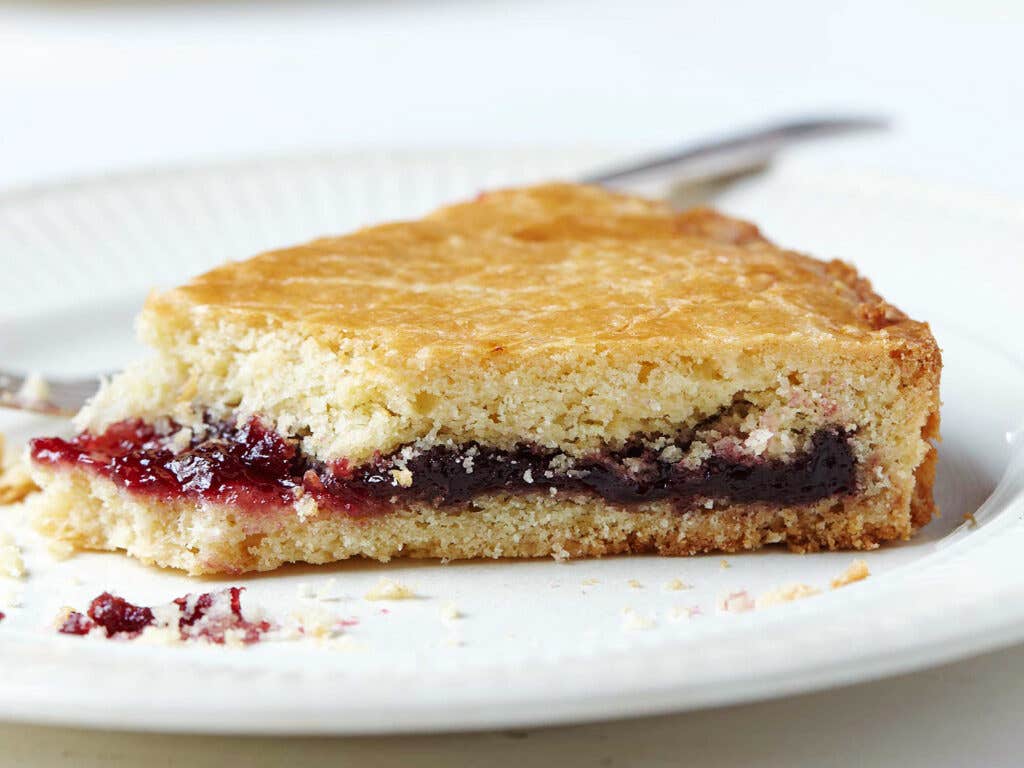
Raphaël Eliceche—up to his right elbow in warm milk curds and wearing a beret—whistles as he stirs. It's a plaintive tune. When I ask the 49-year-old cheesemaker what it is, he grins as if he's been caught.
"It's an old folk song," he says. "We have a shepherd who sings it, and it's gotten stuck in my head."
Although Bidarray, the nearest village to Eliceche's farm, is only 40 minutes southeast of Biarritz where we are staying, we didn't allow for the twisty one-lane road into the Pyrenees foothills. Fortunately, there are hand-stenciled fromage signs at every turn. When we arrive, it's past nine. Meanwhile, Eliceche has already milked his 400 ewes and combined the morning's milk with yesterday's in a stainless-steel vat the size of a Jacuzzi.
While we wait for the milk to warm in the steamy dairy, he tells us about his background. Like their neighbors, his parents grew a little corn and some grapevines and kept a few pigs and sheep. Like all farmwives, his mother, Jeanne, made cheese, and Eliceche, before attending ag school, learned from her. She taught him to milk the animals by hand and heat the milk in a copper cauldron in the fireplace. At age 26, he began to pursue cheesemaking seriously. But he probably wouldn't be a full-time sheepherder and cheesemaker today if a young intern hadn't suggested posting those charming signs that led us in. Sales jumped. Ten years ago, he modernized the operation. "I have new equipment," he says. "I don't milk the animals by hand anymore, but I kept the same recipe."
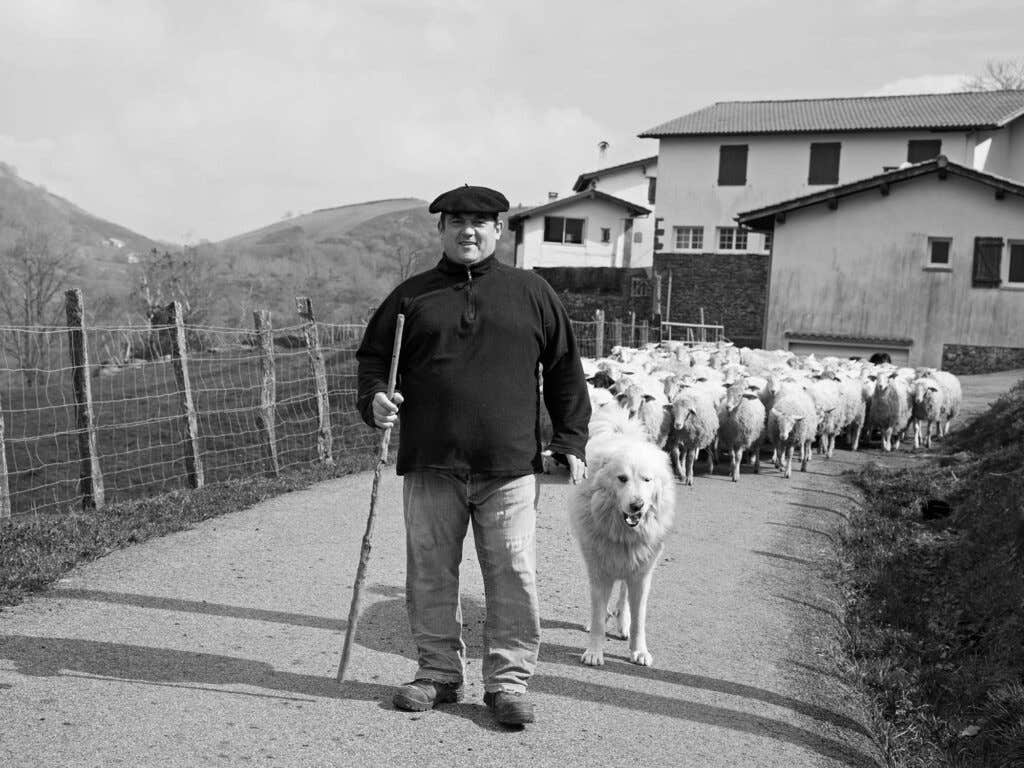
When the milk has almost reached body temperature, Eliceche adds rennet. In the half hour of downtime it takes to curdle the milk, he talks about his ardi gasna, Basque sheep cheese, which he named Irubela after a nearby mountain. His version is made more or less in accordance with the local AOP rules for Ossau-Iraty cheese. His sheep come only from the approved breeds: Basco-Béarnaise, Manech tête rousse, and Manech tête noire. His Irubela is uncooked. It's pressed into a cylinder that's briefly bathed in brine and aged for at least two months. But it doesn't carry the official seal of approval. Why forgo the prestigious appellation? "My recipe is the old one, by taste," he says.
Once the curd forms, it's finely cut to help expel the whey. To judge its readiness for draining, Eliceche first removes his beret so it doesn't fall into the vat, then reaches in to ensure that the pieces are the size of corn kernels. "Now the real work begins," he says. Joined by his wife, Sylvie Beaussant, the two quickly transfer the curds to 53 muslin-lined perforated molds, kneading and packing them with their knuckles.
The molds filled and stacked for pressing, we gather around his mother's kitchen table to taste a fully aged cheese. Jeanne sets out homemade cherry preserves, but Eliceche demurs. "It denatures the flavor," he says. "It tastes good, but then it's dessert." This still supple 10-month-old is ivory with a straw-colored rind. It's entirely different from a cheese like Idiazabal that you might find in Spain, partly because they use different sheep and it's unsmoked. The flavor, nutty and pungent with a whiff of the barnyard, must be what ardi gasna has tasted like since the Basques first smuggled contraband across the Pyrenees. Now I understand why Eliceche decided to go off-piste.
I ask about the Irubela label, adorned with two green stars reminiscent of the Basque cross, but not an actual one. For Eliceche, making a literal representation would smack of trading on his identity. "My cheese is for sale," he explains. "Not the Pays Basque."
Now Get Cooking
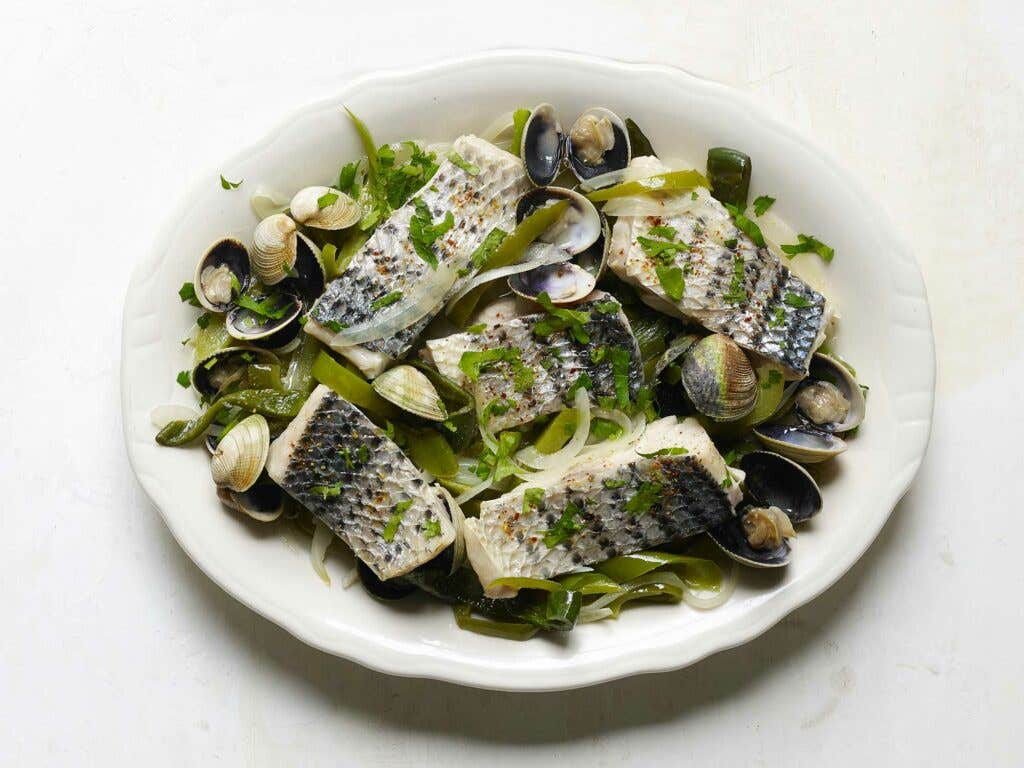
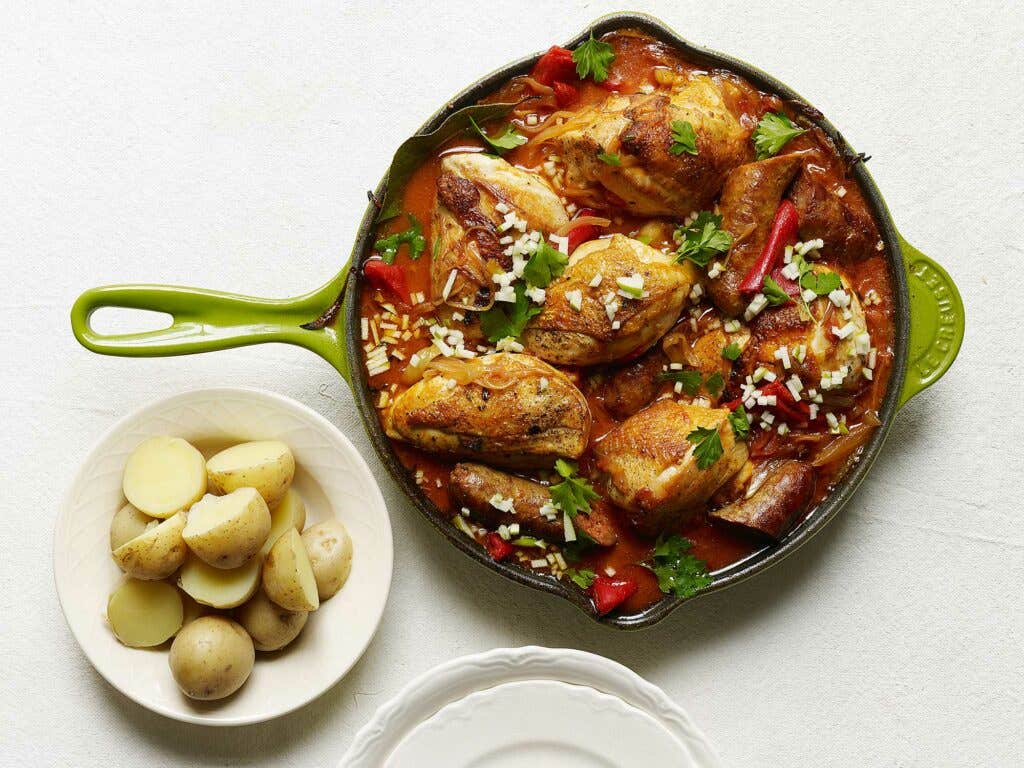
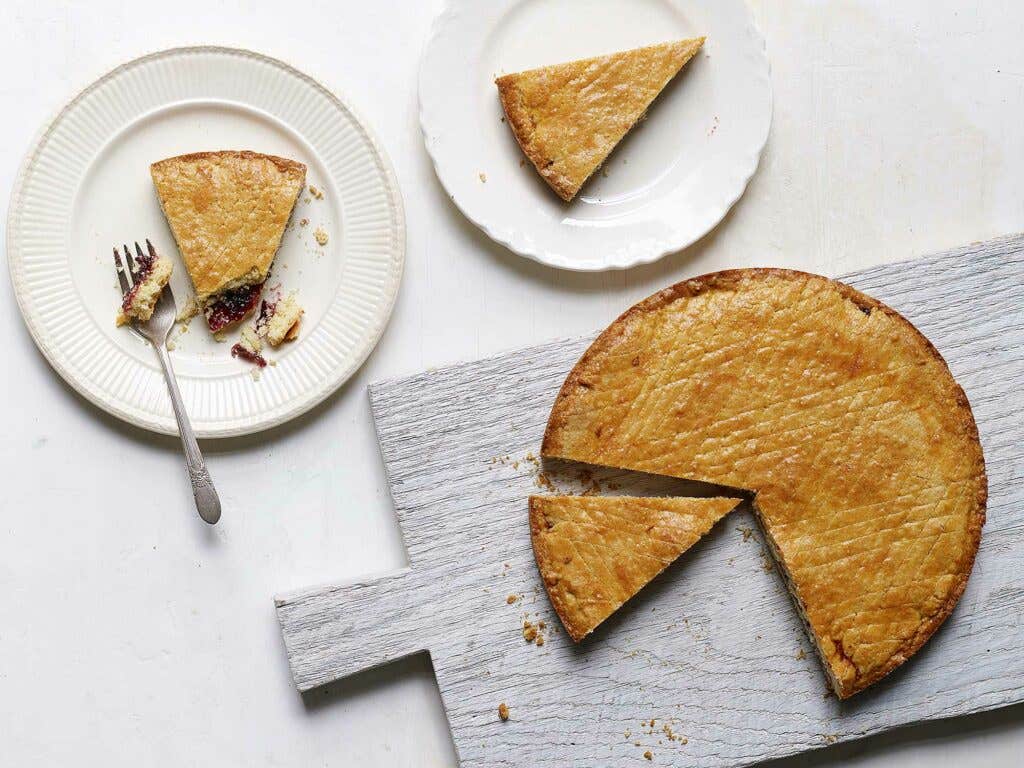
Keep Reading
Continue to Next Story
